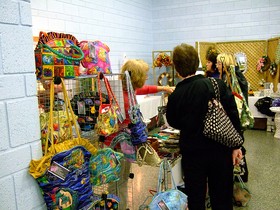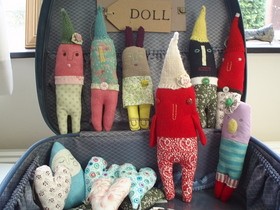 While many retail giants have fallen by the wayside, it is no secret that thrift stores have flourished in these tough economic times.
While many retail giants have fallen by the wayside, it is no secret that thrift stores have flourished in these tough economic times.
However, many thrift store owners are worrying that the new legislation that regulates lead content in clothing and toys could very well drive them out of business as well.
Thrift stores already are civilly liable if someone is injured by a product. But under the new law, selling any product containing lead becomes a criminal offense, making it virtually impossible to obtain insurance coverage and exposing resale businesses to unnecessary risks. — Salt Lake Tribune
Here’s how the new lead laws will affect you as a thrift store shopper (or owner), or if you’re a crafter who makes handmade items and sells them on places like eBay and Etsy…
While the law was written to protect us from tainted products coming from China, the effect could be devastating for American re-sellers.
Technically, thrift stores are exempt from the lead testing law.
The law was initially interpreted to also apply to thrift stores and other resale shops, but the Consumer Product Safety Commission said that resellers are not required to test products. However, regulators also said resellers cannot sell items that exceed the lead limits mandated in the new law and should “therefore avoid products that are likely to have lead content” unless they have information indicating the products meet the limits. Resellers who sell products in violation of the new limits can face civil and/or criminal penalties. — NBC Dallas Fort Worth
So while thrift stores are exempt from testing, they are still liable should lead be found in an item they sell.
This may help to keep thrift stores in business, but they will likely discontinue many of the items they previously sold in exchange for peace of mind.
However, while thrift store sales are strong despite the lead-testing law, mom and pop operations that supply low-cost merchandise to discount stores are in danger.
Pam Crowson, a stay-at-home mother of 4 in Pilot Mountain, NC started handmaking hair bows and other products for kids a year ago. She sells them on eBay and Etsy, an online marketplace for handmade products, and makes enough each week to help pay for groceries. While large companies can afford to test materials when making tens of thousands of copies of each product, she said that she makes so few of each item that 3rd-party testing of her fabric — at a few hundred to a few thousand dollars per sample — would be cost-prohibitive for her small operation. — Media General News Service
What does the government say about this?…
There are exceptions to the testing rule for crafters making only one unique copy of each item, said Julie Vallese, spokeswoman for the Consumer Product Safety Commission. Small toymakers have inundated the commission with questions and complaints about the new standards, she said. Many are confused about whether the new rules apply to their operations. ‘It’s sticky and it’s tricky, but if we can’t see that the products are truly one-of-a-kind, they have to be tested,’ she said. ‘This is not a time where a manufacturer should be rolling the dice on compliance with the law.’
So much for being enterprising!
I suspect eBay, Etsy and other online websites are about to lose a large portion of their core business due to these rules.
As a result, you and I will have fewer resold and handmade items to choose from.
RELATED:
- Children’s Library Books Get Temporary Immunity From Lead-Testing Law
- Lead-Testing Rules Threaten Thrift Stores
- Etsy: Voicing Concerns Over The New Lead Law
- Thrift Stores Must Look Out For Lead In Children’s Items
- 35% Of Toys Contain Some Lead
- New Lead Law Could Wipe Out Handcraf
ted Toy Makers- Is Etsy Doomed?
- New Lead Law Could Drive Crafters Out Of Business
- Thrift Stores Shut Out Toys Due To Lead
- New Lead Rules May Be Toxic To Thrift Stores
- No More Thrift Store Kid Stuff?




